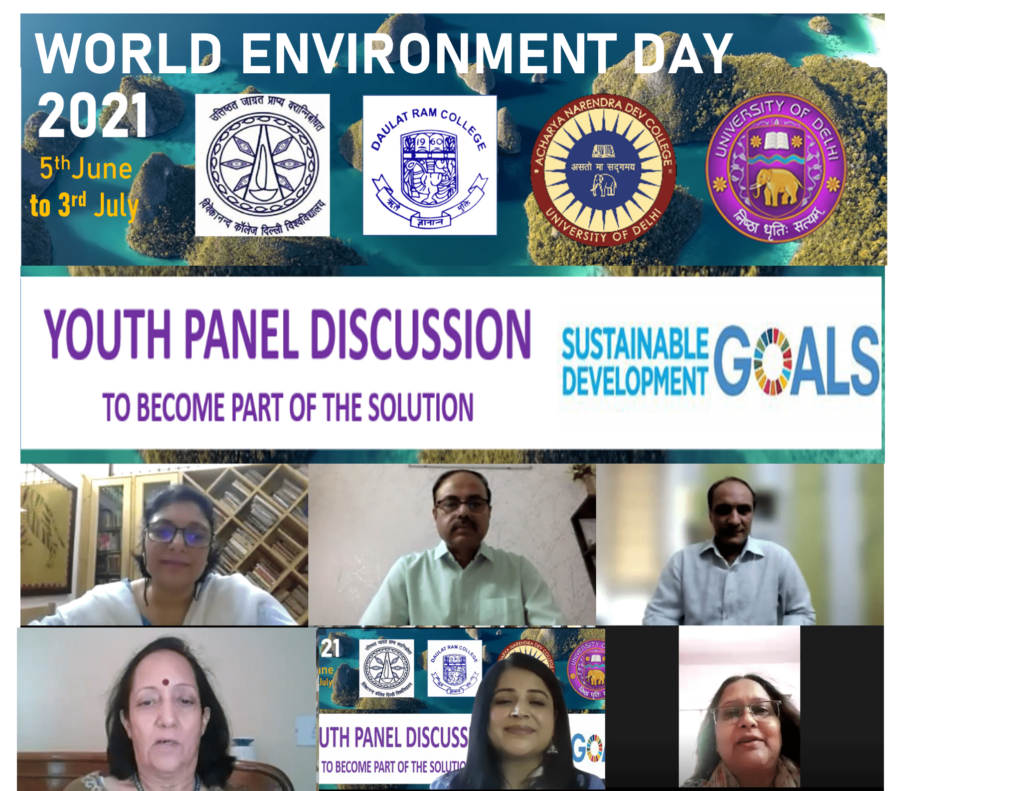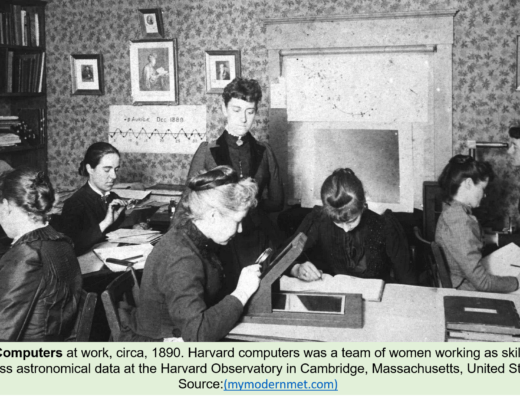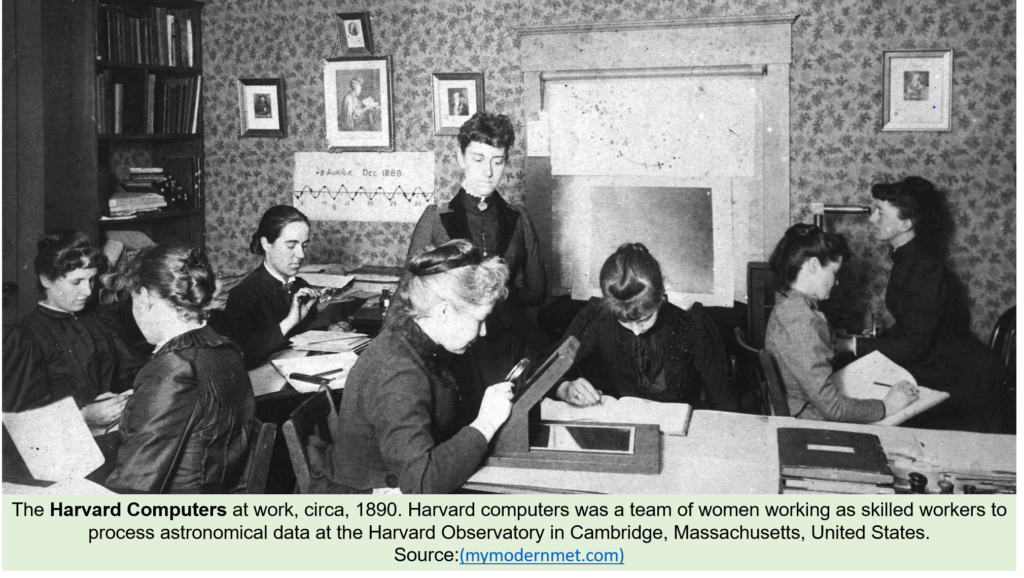UNDER THE GUIDANCE OF:
DR. SEEMA SHARMA, Center for Women Policy Research (CWPR), Faculty, University of Delhi; email: seema.sharma.phd@gmail.com
BY: MUSKAAN GUPTA, KARTIK AGRAWAL & TRINAY VEMULAPALLI (O. P. Jindal Global University, Sonipat, Haryana)
ABSTRACT
Internet Governance is a set of rules, policies and principles that govern the global cyberspace to give shape to the internet as we know it or want it to look like in the future through the use of ICTs (information and communication technologies). It has recently been realized that the internet and various resources associated with it are becoming gendered spaces and women’s involvement in those spaces is very limited. To combat this issue, Organizations like UN and WSIS have proposed charters like Tunis Agenda, Beijing+30 etc on the issue of women’s rights and safety with respect to internet governance. The issues majorly range from gender discrimination to online abuse and harassment. These international organizations have proposed specific measures to combat these ongoing issues but have failed to realise the fundamental problems associated with the issues. Specific policies that have been proposed are in the form of GEM (Gender Empowerment Measures) that largely revolve around inclusion of women in panel discussion, promotion consideration, integrate gender and promote gender sensitive content among other things. In this paper we shall discuss the shortcomings and problems associated with the policy drafting/goals of these organizations and how they feel more like band-aid solutions and try to provide some suggestions that might curb/reduce digital gender divide.
- INTRODUCTION
Technology has developed over the last two decades at a fast pace. It has started governing all the realms of our life. In the 21st century you cannot survive in the job market without having experience in technological know-how. Almost everyone agrees that technology has been a great boon, but unfortunately good things come at a cost. One of the costs associated with the sphere of technology is gender divide. It was observed that access to resources and the sphere in itself is becoming dangerous and discriminatory towards women. This fact was noted by many committees like UN, WSIS have proposed strategies to combat these problems. They have proposed action plans, policies, etc to curb these growing problems. But unfortunately, there are underlying issues within these so called ‘plans’ that have not been recognized. One could possibly say that these are only plans and they never see the light of the day. They remain only as proposals and countries do not act upon them. Therefore, through this paper we will strive to utilize both primary and secondary data to reveal the ground reality that exists and the problems that are associated with these plans. Further the paper will try and give alternatives that could be utilized to make cyberspaces both accessible and safe for women. To broadly understand this concept we must first endeavour to understand the goals and objectives of international committees and what they have decided on this aspect, then we should try to map the policy action plan of different countries with specific emphasis on India to see what they did to further the goals of those committees. Then we shall analyse the problems and try providing some alternatives through the use of empirical research conducted in India.
- 1. What is the situation?
We must first try and understand the goals/policy making objectives of international committees and organizations that have worked towards gender digital divide and have tried to understand the intricacies of this topic. This particular aspect can be understood through the work of the committees like Beijing+10, WSIS etc. Beijing, Beijing+10, Beijing+20 are international committees that have held discussions on technology and women rights since 1995. During the first meeting there was no mention of ICT or any other form of higher technological access but over the years their discussion reached towards not only ICT but safer internet space, promotion of gender equality in access to the internet, among many such related topics. The committees’ goals and objectives since 1995 have broadly been focused on mainstream concepts like women and poverty or education and training programmes for women or women in the sphere of decision making and power. But recently they recognized the Internet as a sphere that needs to empower women. They recognized ICTs which need active involvement and participation of women and formed major objectives on the same, but are yet to formulate action plans which can actively imply that they are working towards furthering this objective. In 2005, the UN took active initiative through the committee named as ‘United Nations Division for the Advancement of Women’ and tried to further the new objectives recognized in Beijing. One of their first moves was to actually try and procure data from various countries and try to initiate a knowledgeable database that can significantly help in determining the participation of women in the sphere of Internet governance. Yet these committees regularly publish data which implies points like stereotypes, growing number of cases of online harassment, a smaller number of active participation of women etc. We can definitely say that even though we have a knowledgeable database regarding women and internet governance but the data is disturbing in nature. It shows that the work or action plans devised by these committees have not been implemented or not taken seriously by participating nations.
Another important committee in this sphere is WSIS (world submit on the information society). This committee was among the strongest committees to work on issues related to women and Internet governance. They directly and indirectly involved multiple stakeholders that ranged from private organizations to public organizations to actively discuss ways to make internet space more accessible and safer for women. Their objective was to fight the digital divide that was created not only through gender but other factors as well. Their goal was to start a digital revolution. But apparently, even though this committee sounds intriguing and their work even better. But their results were only on paper. Tunis agenda and Post WSIS and WSIS+10 reviewed their work and stated that they were only trying which basically meant they had failed, and these new committees that come up in future keeps the trend of ‘trying’ alive. They recognize its importance of this issue but they fail to deliver[1].
- 2. Digital Gender Divide and Policy Failure
When the international organisations and agencies talk about striving to achieve equality in internet governance, they fail to address the root cause of it all. The root cause here being the lack of equality of opportunities to the females worldwide. They first need to accept the fact that since the opportunities are not equal, qualifications may be deficient too and there needs to be better female representation despite that deficiency, at least in these organizations because women would have a better understanding of the ways in which they face difficulties and hurdles that exist in their lives which needs to be addressed in order to achieve the goal. Also, the representations cannot be from the elite classes of developed countries only as they would have little idea about the majority population.
The next gap that comes in is the actual initiative by countries. As we know, ratifications by countries are not the rule of the land and just a long-term objective that the government of the country may or may not make efforts to achieve. So, even though countries ratify the charters of the international organisations, there is no real data to prove the existence of policies, laws or actions which would successfully take the countries in the direction of achieving the goal. A major drawback is that there is a difference between goals and policies, goals being something that ‘can’ be achieved and policy that ‘has’ to be followed. International committee proposes goals which lack motivation, time, implementation and inspiration factor. The governments of the ratifying countries would have no intention to implement the prescribed goals unless there is a driving force behind it.
Another key issue with the current way is that the international organizations are not proposing specific policies and laws which would actually make a drive towards the implementation and in turn make a difference. The current policies prescribed by the organizations are very broad and have not been of much help in improving the situation. Hence it becomes important to study these aspects in detail and try to learn from efforts of other countries and the policy they initiated to curb the digital gender divide. Through the efforts domestically and internationally we would be in a better position to analyse why or why not certain policies fail which brings us one step closer to finding strong solutions that actually make a difference.
- OBJECTIVE
The objectives of this study are to understand the above-mentioned issues/gaps and analyse them in detail with primary focus being on India. Further objectives are as follows: –
- To identify the and analyse the reasons for lack of female participation in Internet Governance despite the attempt of International agencies striving for gender balance in the field.
- To identify possible solutions to overcome the lack in the initiatives and policies of the international organizations.
These two objectives with the help of primary data collection will assist us in determining the ground reality.
- METHODOLOGY
We utilize both primary and secondary sources to build upon the inference. Primary source is in the form of a questionnaire which focuses on students and professionals. Sample size is of at least 50 people varying between both genders and research is primarily focused on geographic location of India. It is represented in a report in the form of quantitative data that focuses on generalized conceptions within the society. The questionnaire consisted of 8 multiple choice questions to control the responses to certain aspects and study those aspects further. It was conducted in an online manner with simple easy to understand questions. The data collected will be presented in form charts, illustrations or graphs to form necessary inferences. Primary data in the form of questionnaires lacks the accurate standards of application to the whole society since the sample size is small, but it reflects certain notions in an efficient and effective manner that are widely acceptable within the prevalent groups. There are other shortfalls like biases and meaningless responses with respect to questionnaires. To combat these shortfalls of primary data we are utilizing secondary data to corroborate the findings. Secondary data will be in the form of articles published in reputed journals that are doubly peer reviewed.
- ANALYSIS OF OTHER COUNTRIES AND THEIR EFFORTS ON ISSUE OF DIGITAL GENDER DIVIDE
A pertinent finding with regards to committees is that many nation states were part of these committees that included developed, developing and underdeveloped countries. Since they were part of these committees as stakeholders it is important to see what they did to further the goals and objectives that were recognized in these committees. We will try and look at various countries to understand their efforts towards achieving the objective of furthering access to the internet and its technology safely for women. Canada is one such developed country that has been part of these huge international initiatives like WSIS, Beijing+10 etc. They have constantly voiced their opinion on international forums with respect to gender and digital revolution. They recognized the goals and objectives like access to the internet and technology associated with it, needs a wider circulation among women. Shade[2] in her article talks about Canada and the development of their digital policy from the 1990s to 2015. According to her, Canada realized the normal problems that we see nowadays like low participation of women in the workforce, prevalence of harassment online, wage gaps and a smaller number of women in positions of decision making and power. She discusses that Canada had taken a large number of initiatives since the 1990s to further the access of internet and technology associated with it but they never fully paid attention to the gender aspect. She discusses instances wherein certain political goals led to dropping of gender aspect and focusing on providing internet and facilities associated with it to larger masses, thereby overshadowing the gender aspect completely. It brings us to question that if western advanced countries are dropping gender as a topic for discussion and inclusion of women in technologies related to the internet, can we expect other nations who are developing and underdeveloped to follow such pursuits like inclusion of women in Internet and related technologies?
Let’s take a look at Rwanda. Unlike its other African counterparts, Rwanda is considered to be very gender-neutral and was recognized as one of the top ranking countries on gender gap Indices. Rwanda’s example is important to look at because they have highlighted cultural problems like domestic responsibility, patriarchy, tendency of the society of not allowing women to participate in the economic activities and all of these cultural problems pose as barriers towards the end objective of giving women access to the internet and the technologies associated with it[3]. Rwanda has particularly worked hard towards the gender aspect and inclusion of women in various spheres. Despite being poverty-stricken, and experiencing a lack of natural resources, they focused heavily on building ICT’s and empowering women for the same. They launched various programmes like one laptop per child (OLPC) that resulted in equality of access to internet resources. Their government had taken active steps and recognized the various problems that existed in a patriarchal structure and made policies to curb the same. They started these reforms from within the political structure wherein women representatives are selected separately and only by women. Though digital gender divide still exists in Rwanda but not only did they acknowledge the presence of the same but also charted out special solutions which have resulted in narrowing the gap for access to the Internet and related technology with respect to men and women. This shows that actively recognising the root causes of the problem of digital gender divide and encouraging women to participate can go a long way in bridging the gender gap in the digital spaces.
- WHERE DOES INDIA STAND?
India boasts itself to be the youngest nation in the world (by the means of average age of the population). Being the youngest means, it should have the highest workforce but the reality says otherwise. According to the World bank the current Workforce in China stands at 778,700.55 per million, whereas India has about 500,995.15 workers per million[4]. As per the Government’s release of Periodic Labour Force Survey (PLFS) – Annual Report published in June, 2020[5]. In the year 2018-19, 52.1% of the rural men are employed compared to 19% Females. In the urban areas 52.7% males are employed but only 14.5% females are employed. To sum it up 52.3% males are employed in the whole nation and only 17.6% females are employed. This clearly shows the disparity in the participation of the two genders in the working class. The story remains somewhat the same in the unorganized sector as well. Though women comprise 40% of the total agricultural force, they hold just 9% of these lands. 60% of the women do not own any asset to their names which is proof enough that there exists disparity in owning the means of production or resources which leaves women in a vulnerable condition as they have to depend on men for their livelihood.
This disparity in access to resources can be seen in the context of the internet access and the means for using it too. Out of the total number of internet users in the country 65% of them are male and 35% are female[6]. The positive thing we have here is that the number of females using the internet has increased by 26 million which is a 21% increase over the last year. Though the numbers have been looking up but the ground reality even today is that 41% of men in India know about mobile Internet but unfortunately, the same can be said for only 19% of women in India which is very low considering that internet has become a very integral part of people’s life and plays an instrumental role in learning and securing jobs for oneself[7].
The reasons for this disparity in internet use and access could be traced back to the deeply rooted patriarchy in our society along with that the other reasons could be the “leaky pipeline” phenomenon (i.e. choosing their families and other domestic responsibilities over their own personal development)[8] and the public access to ICTs being located in areas where girls do not feel comfortable. The women in India have been subjected to various forms of harassment and other violent attacks. Such evils of the real world have found their way into the virtual world as well. The online medium has become a way of silencing those who speak out, all these take a toll on the mental wellbeing of an individual as well. The psychological barrier also includes the fact that many girls/women think that using the internet is something which is against the culture and thus refrain from using the same. One of the reports suggest that 12% of the women in India do not use the internet because of the negative social perception associated with it and 8% do not use it because their family members do not allow them to use the internet[9].
The implications of such disparity in access to internet and ICT could place women at a disadvantaged position. The lack of knowledge in these areas will affect the women in several ways:
- Computer literacy: Those who can operate computers stand a better chance than those who cannot, though literate and otherwise competent, to get evena secretarial job let alone an administrative one.
- Tech savvy operations: Those who know how to operate automated teller machines can draw money faster and those who cannot operate need to spend more time at manual counters, thus they fall behind in learning the new technologies.
- Inferior Jobs: Because of limited or no access to resources for the women, not many women reach at positions where they have decision making powers or from where they can help other women. This also results in women feeling unsafe while working in offices as these places are majorly occupied by men.
India has been a participant of WSIS in both Phase 1 and Phase 2 and is a signatory of Beijing 20+ and CEDAW. These international initiatives were taken to combat the gender gap in digital access between males and females of the world. Despite this, India has seen little improvement in the situation of women on the digital platforms which is evident from the survey we conducted and from the reports of various international organizations (Refer to Illustration VIII).
The reasons for little to no success in India in bridging the gender gap in digital spaces despite all these international initiatives and commitments is quite rudimentary. The policy frameworks of the international organizations fail to address the actual problems at the grassroot level. The Indian society has been a Patriarchal society for far too long which has caused the discrimination against women that we see even today. The existing gender gap on the digital platforms is a part and parcel of this very phenomenon of the Indian society. If this gender divide is to be bridged, just talking about it on international platforms would not be enough. There has not been any introduction of new policies in this regard by the Indian government. Even though the government has launched the Digital India policy, it has conveniently remained silent on the gender aspect for the same and made the policy totally gender neutral. When women are in a worse position than men, they need better policies to make the digital spaces more gender inclusive and not the provision of an equal playing field because the availability of resources with the two gender groups is not equal. The evidence of the same can be seen in the statistics published by GSMA, which highlights that the chances of a woman owning a smartphone in rural India is 72% less likely in comparison to a 63% in urban Indian areas[10].
In addition to this, it is imperative to ensure that the policy makers are aware and properly understand the problems of women which cause the lack of equal footing. There is a lack of this understanding during policy making because the policy and decision-making positions are mostly occupied by men who show lack of initiative to understand the situation of women and cannot relate to them very well which is very evident in the attitude of the government which launching the Digital India initiative as the government did not stop to think about the female population in India. This is partly because of lack of female representation in the parliament of India. In the incumbent Parliament, there are just 78 female representatives of the total of 542 members in Lok Sabha, which is a mere 14% representation[11].
- FINDING OF SURVEY
The findings across the globe by scholars is that digital gender divide stems from issues like lack of strong female role models in organizations and positions of power, deficit in access to resources that might stem from cultural beliefs and domestic responsibility. We conducted a survey to see the attitude of people on certain aspects of digital gender divide. Most of the important findings are attached in the appendix from which we will draw the inferences. It is pertinent to note that the sample survey in no way whatsoever reflects the attitude of the whole Indian society, but it reflects a part of urban working and student population of India. Most of the respondents are either students or working while some of the respondents are part of domestic duty culture (for more details refer to illustration 1).
One of the problems reflected by scholars[12] is that there is a lack of women in decision making roles which is also reflected by the survey results. It is rare for women to occupy positions of power. Even if they are, the statements from these women are that they have fought tooth and nail to get into these positions, which implies that to reach such positions there are various issues related to gender bias that women must overcome. See illustration II which reflects that many people still feel that women are not in positions of power or there is a lack of mentor figures that a girl might look up to in their working life. illustration III reflects the lack of gender sensitization workshops conducted by the organization. 50 percent of the respondents say that their organization doesn’t initiate or take an active role towards conducting workshops that might help in increasing gender sensitization and thereby curb the digital gender divide. illustration VII clearly shows that most of the respondents feel that gender bias issues still exist which range from pay disparity to patriarchy etc.
Another problem is online harassment of women. Many informal and formal surveys have been initiated that reflect the dangers of being a female online. Not only that, there have been undercover studies which reflect the same. The problem with respect to online harassment is that cyber crime is very difficult to track and then further initiate criminal proceedings against the perpetrators. It requires a cross-jurisdictional approach i.e. agreements between countries, states and executive departments that need to be willing to work together to bring perpetrators to justice. Usually these cross-jurisdictional assistance is lacking which makes a female vulnerable in digital spaces. illustration V clearly shows that governmental action has not reached the masses. There have been no action or movement taken by the government on a large scale that might create awareness related to online harassment. Not only that we can safely assume that most of the population, be it male or female, will be unaware of what to do in case they are victims of cybercrime like cyber-bullying or harassment.
Digital gender divide has been created due to a particular problem which is related to adverse accessibility/usability of the internet and its related technologies. Illustration VI reflects most of the survey takers have answered that they have the required knowledge of the technology they use for their work/studies, but this does not reflect the majority of the Indian population. The sample population we have at hand, consists mostly of either students or professionals who are from upper middle-class background and live in urban regions of the country. In this particular context, one must rather rely on inclusive data from other sources. Nevertheless, the data collected by the survey does give insights about the level of awareness and initiatives pertaining to the issue of digital gender divide and we find that the level of awareness and incentives are very low and some people, even though they are educated, fail to acknowledge the presence of digital gender divide.
- CONCLUSIONS
The gaps that exist are two-fold with respect to digital gender divide. One is country specific issues, put simply, means that Canada might not have the same problems as India. Others are related to international communities and governmental policies. These committees and policies for the past 2 decades have only been trying yet they have failed to establish or work towards these objectives despite working with various stakeholders which involves private companies that form a major part of Internet related technologies like Facebook. But that doesn’t mean that digital gender divide cannot be narrowed down. We looked at the case of Rwanda which is a poverty-stricken country yet is considered to be very gender neutral. It has actively worked towards these issues by involving women. We believe that the solution to digital gender divide is two-fold, first access and second know-how. To curb digital gender divide there must be access to resources i.e. basic ones like laptops, computers and cheap internet services. India has already achieved one of the aspects that is access to the internet at cheap prices. In the past decade by becoming one of the first countries that provide internet which is less than 50 rupees for 3 GB 4G net for a month[13]. Second aspect is know-how or the knowledge of using gadgets which gives access to the internet. This skill is easier to develop at an early age which is why we see a lack of such skills in the older generation as they did not get the chance to develop the technological aptitude at an early age and this phenomenon is even more common in older women because men are given preferential access to gadgets and internet over women. To overcome this issue, a direct action plan needs to be formulated that helps girls in gaining access to gadgets and internet and training at an early stage thus they have an early start and develop a proper aptitude in technology. It can be through schooling programmes but then the government needs to make sure girls are actively involved in schools.
7.1 Policy Solutions
Policy Solutions for Cyber Crime are difficult to frame because there is a cross jurisdictional problem and anonymity creates a challenging factor. For example A criminal branch in country X might not have jurisdiction or resources to pursue a crime committed in country B. Hence the crime rate is high due to anonymity while enforcement is quite low due to limitations of enforcement agencies. Common solutions like spreading awareness, cross-jurisdictional treaties to increase cooperation between criminal branches to pursue a case in other jurisdictions are cited by many scholars[14].
UN report[15] clearly states that cyber-criminal activities like bullying, harassment etc usually take place on social media platforms. So we propose that governments and respective organizations should invite these service providers like snapchat, Facebook, WhatsApp, skype etc to make cyberspace safe. They are in a much better position to increase the safety of people online. For example, the ‘block’ options in the social media applications did not exist initially but were provided by their respective companies to increase their user base by making them feel safe. To force the hands of these companies to actually create new methods or incorporate the necessary changes that the governments want, we suggest the creation of a separate department to handle technology related cyber-crime issues. This department’s job would be to issue safety ratings without bias, based on crime reports, user safety and ingenuity to protect users. The result would be that the citizens of that country will be more willing to use the apps with better safety ratings, and the service providers will be forced to develop new concepts/features to get better safety ratings in order to increase the chances of profitability.
The next issue to be addressed is cultural diversity and cross-jurisdictional issues. To help the users with the same, service providers or app developers must include a manual that can be accessed by anyone in the help section which gives location specific solutions that actually work and have been previously tested by local people of that location. This manual and instructions should be displayed when a new user signs up or joins the service. It would help the user especially if he/she is unaware and also create a safety net for them to rely on in case of cyber crime issues. The department’s job is to ensure that it wins reasonable trust of the community/citizens by regularly publishing the cases they have solved to encourage people to approach them with their problems associated with cybercrime. Further the department would be responsible for working on the manual and assisting the service provider in increasing the viability of solutions provided in manual. International organizations’ role should be to increase cyber co-operation and assisting information exchange between cross-jurisdictional cybercrime issues and making the enforcement agencies accountable for the reported cyber-crimes committed in their jurisdiction. Additionally, people should be able to report the cyber crimes to the concerned authorities on an online platform. This could be the way in which cyber crime might be controlled or its likelihood reduced thereby making the internet a safe place for women.
Another very important step would be to make reservations for female students, especially from the economically weaker sections of the population and for females from rural areas. Such reservations should be demarcated and separate from the one made for other categories. This would help in increasing the levels of higher education of the underprivileged female population of the country and they would be better equipped to make their voices heard and bringing change by acquiring positions which would give them the power to do so.
Apart from this, there needs to be proper female representation in the decision making positions for which the example of Rwanda can be followed by making a separate electorate with 100% female participation so that only women get to select the female candidates for parliament and consequently, the policies for improving their situation and bridging the gender divide. For this initiative to work, the female candidates would also need to form a separate department for “Female Welfare” so that they have powers to bring about policy changes to make a change in the society.
APPENDIX
ILLUSTRATION I- DEMOGRAPHICS OF RESPONDENTS



ILLUSTRATION II – ROLE MODEL PROBLEMS



ILLUSTRATION III- WORKSHOPS

ILLUSTRATION IV- HARASSMENT ISSUES ONLINE

ILLUSTRATION V- GOVERNMENTAL ACTION ON ONLINE SAFETY

ILLUSTRATION VI- EASE OF USING INTERNET RELATED TECHNOLOGIES

ILLUSTRATION VII- GENDER BIAS

ILLUSTRATION VIII- GENDER DIVISION OVER THE YEARS
Description- Gender division of total number of internet users in the country for the years 2015,2017,2019. The graph is a pictorial description of the data of all the internet users in the country in the respective years.
| Year | India | Urban | Rural | |||
| Male | Female | Male | Female | Male | Female | |
| 2015 | 75% | 25% | 62% | 38% | 88% | 12% |
| 2017 | 64% | 36% | 60% | 40% | 67% | 33% |
| 2019 | 65% | 35% | 60% | 40% | 69% | 31% |

Sources: Compiled by us through various sources given below
- ‘Internet In India 2015’ (Internet and Mobile Association of India 2015)
- ‘Mobile Internet Report 2017’ (Internet and Mobile Association of India 2017)
- (‘Digital In India 2019 – Round 2 Report’ (Internet and Mobile Association of India 2020)
BIBLIOGRAPHY
- Doria A, ‘Women’s Rights, Gender and Internet Governance’ [2015] Association for Progressive Communication <https://www.apc.org/en/pubs/women%E2%80%99s-rights-gender-and-internet-governance>
- Shade, ‘Integrating Gender into Canadian Internet Policy: From the Information Highway to the Digital Economy’ (2016) 6 Journal of Information Policy 338 <http://www.jstor.org/stable/10.5325/jinfopoli.6.2016.0338> accessed 1 February 2021
- Mumporeze N and Prieler M, ‘Gender Digital Divide in Rwanda: A Qualitative Analysis of Socioeconomic Factors’ (2017) 34 Telematics and Informatics 1285 <https://linkinghub.elsevier.com/retrieve/pii/S0736585317301612> accessed 1 February 2021
- ‘Labor Force, Total | Data’ (Data.worldbank.org, 2020) <https://data.worldbank.org/indicator/SL.TLF.TOTL.IN?most_recent_value_desc=false> accessed 6 February 2021.
- ‘Periodic Labour Force Survey (PLFS) – Annual Report [July, 2018 – June, 2019]’ (Ministry of Statistics & Programme Implementation 2020) <https://pib.gov.in/PressReleaseIframePage.aspx?PRID=1629366>
- ‘Digital In India 2019 – Round 2 Report’ (Internet and Mobile Association of India 2020) <https://cms.iamai.in/Content/ResearchPapers/2286f4d7-424f-4bde-be88-6415fe5021d5.pdf>
- ‘The Mobile Gender Gap Report 2019’ (Global System for Mobile Communications 2019) <https://www.gsma.com/mobilefordevelopment/wp-content/uploads/2019/02/GSMA-The-Mobile-Gender-Gap-Report-2019.pdf>
- Singh S, ‘Bridging the Gender Digital Divide in Developing Countries’ (2017) 11 Journal of Children and Media 245 <https://doi.org/10.1080/17482798.2017.1305604> accessed 8 February 2021
- ‘Women and the Web’ (Intel 2012) <https://www.intel.la/content/dam/www/public/us/en/documents/pdf/women-and-the-web.pdf>
- ‘The Mobile Gender Gap Report 2018’ (Global System for Mobile Communications 2018) <https://www.gsma.com/mobilefordevelopment/wp-content/uploads/2018/04/GSMA_The_Mobile_Gender_Gap_Report_2018_32pp_WEBv7.pdf>
- ‘Women’s Representation in Lok Sabha Rises to a Record at 14.4%’ The Hindu (New Delhi, 25 May 2019) <https://www.thehindu.com/news/national/womens-representation-in-lok-sabha-rises-to-a-record-at-144/article27248880.ece> accessed 7 February 2021
- ‘Internet In India 2015’ (Internet and Mobile Association of India 2015) <https://cms.iamai.in/Content/ResearchPapers/a58218be-d7d9-4268-84e6-6c58aa4322ce.pdf>
- ‘Mobile Internet Report 2017’ (Internet and Mobile Association of India 2017) <https://cms.iamai.in/Content/ResearchPapers/2b08cce4-e571-4cfe-9f8b-86435a12ed17.pdf>
- ‘Cyber Violence against Women and Girls: A World Wide Wake up Call’ (United Nations Women 2015) <https://www.unwomen.org/~/media/headquarters/attachments/sections/library/publications/2015/cyber_violence_gender%20report.pdf?d=20150924T154259&v=1>
- 1. Smith PK, Thompson F and Davidson J, ‘Cyber Safety for Adolescent Girls: Bullying, Harassment, Sexting, Pornography, and Solicitation’ (2014) 26 Current Opinion in Obstetrics & Gynecology 360 <https://journals.lww.com/00001703-201410000-00007> accessed 2 February 2021
- Lipton JD, ‘Combating Cyber-Victimization’ (2011) 26 Berkeley Technology Law Journal 1103 <https://www.jstor.org/stable/24118683>
- Tripathi Y, ‘Airtel Recharge Offers Today’ Republic World (8 May 2020) <https://www.republicworld.com/technology-news/mobile/airtel-recharge-offers-today-extra-data-at-rs48-and-rs98-respectively.html>
[1] Doria A, ‘Women’s Rights, Gender and Internet Governance’ [2015] Association for Progressive Communication
[2] Shade, ‘Integrating Gender into Canadian Internet Policy: From the Information Highway to the Digital Economy’ (2016) 6 Journal of Information Policy 338
[3] Mumporeze N and Prieler M, ‘Gender Digital Divide in Rwanda: A Qualitative Analysis of Socioeconomic Factors’ (2017) 34 Telematics and Informatics 1285
[4] ‘Labor Force, Total | Data’ (Data.worldbank.org, 2020)
[5] ‘Periodic Labour Force Survey (PLFS) – Annual Report [July, 2018 – June, 2019]’ (Ministry of Statistics & Programme Implementation 2020)
[6] ‘Digital In India 2019 – Round 2 Report’ (Internet and Mobile Association of India 2020)
[7]‘The Mobile Gender Gap Report 2019’ (Global System for Mobile Communications 2019).
[8] Singh S, ‘Bridging the Gender Digital Divide in Developing Countries’ (2017) 11 Journal of Children and Media 245
[9]‘Women and the Web’ (Intel 2012)
[10]‘The Mobile Gender Gap Report 2018’ (Global System for Mobile Communications 2018)
[11]‘Women’s Representation in Lok Sabha Rises to a Record at 14.4%’ The Hindu (New Delhi, 25 May 2019)
[12] Shade, ‘Integrating Gender into Canadian Internet Policy: From the Information Highway to the Digital Economy’ (2016) 6 Journal of Information Policy 338
[13] Tripathi Y, ‘Airtel Recharge Offers Today’ Republic World (8 May 2020)
[14] Smith PK, Thompson F and Davidson J, ‘Cyber Safety for Adolescent Girls: Bullying, Harassment, Sexting, Pornography, and Solicitation’ (2014) 26 Current Opinion in Obstetrics & Gynecology 360. See also, Lipton JD, ‘Combating Cyber-Victimization’ (2011) 26 Berkeley Technology Law Journal 1103.
[15] ‘Cyber Violence against Women and Girls: A World Wide Wake up Call’ (United Nations Women 2015)
Why Better Gender Balance is Important for Sustainable Economic Growth · advait.world









No Comments